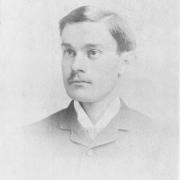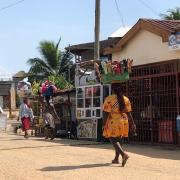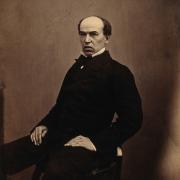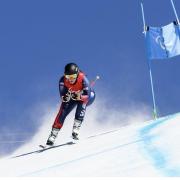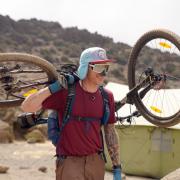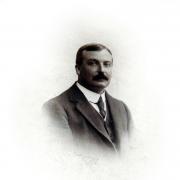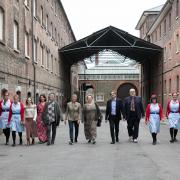As we remember the 70th anniversary of the Battle of Britain, we look at the role fast motor torpedo boats had to play in coastal waters during the Second World War, a use which had its beginnings in the seas off the coast of Kent
During the long hot summer of 1940, while the Battle of Britain was raging in the skies over Kent, another deadly battle for survival was taking place in the seas below, off the Kent coast. This was the desperate attempt to keep open the sea lanes through the English Channel and off the south and east coasts, which were essential for the shipping of supplies around the UK, especially from the north. It was a battle fought between fast motor boats built by the British and German navies, armed with torpedoes and guns and able to operate in waters too shallow for larger warships. At the start of the war, most of the Royal Navy’s attention inevitably had to be given to the Battle of the Atlantic, in which British and American merchant ships faced the gauntlet of German submarines. It was here that most of Britain’s available destroyers had to be used to escort the convoys. Less consideration had been given to the protection of coastal waters. But it was along the offshore shipping routes that Britain’s large fleet of tramp steamers and coalers had to transport supplies around the country, not only those brought into the large ports by the Atlantic convoys but coal and manufactured goods from the north. On any one day there were hundreds of these small vessels sailing to and from the small ports along the east and south coasts. For instance, no less than 40,000 tons of coal a week had to be carried through the English Channel.Under attackIt was this coastal shipping that came under attack from the very beginning of the war, both from the air and the laying of minefields. But there were defences against these, by British fighter aircraft and minesweepers of the Royal Navy. And through the most dangerous waters of all, the narrow Straits of Dover, the convoys took to sailing at night, when they could not be seen from the air. On the night of 9 May 1940, a new form of attack took place which came as a complete shock to the British Admiralty. This was from German fast motor torpedo boats, dubbed E-boats by the British, standing for Enemy. These were small, steel-hulled craft, but with three immensely powerful Mercedes-Benz diesel engines which gave them speeds of more than 40 knots. The British equivalent at that time were wooden-hulled Motor Torpedo Boats (MTBs), on which little had been done for their development, since the Royal Navy did not see much use for them. Even the few that were then available were powered by imported Italian engines, which of course ceased to become available when the war started.The four E-boats which set out from their Wilhelmshaven base on the first sortie to attack shipping in the English Channel faced a voyage of 200 miles across the North Sea and a similar distance back, a longer range than had ever been attempted. Just before midnight, north-east of Dover, they spotted a British destroyer, but were seen before they could fire their torpedoes. The flashes from the destroyer’s guns showed that they had run into a Home Command force of destroyers and cruisers searching for German minelayers. In the running battle that followed, one of the E-boats crashed into the side of a destroyer which it had not seen. The bows and forecastle of the E-boat were sheared off and the boat began to sink. Remarkably, by reversing engines and with pumps working at full pressure, it limped home. Before the other three E-boats had to return because of lack of fuel, one managed to fire two torpedoes at another destroyer, approaching from the dark horizon so it could not be seen. Although it was hit, the destroyer Kelly was badly damaged and had to be towed home for extensive repairs.
Night was the hunting time for the boats of both sides, vulnerable as they were to attack from the air by day
Further successes later in May showed that E-boats could make their way undetected through the Dover Strait, a passage previously considered relatively safe because U-boats and large warships were deterred by mine barrage and shore batteries. The danger became even greater with the fall of France, which gave the Germans E-boat bases along the French coast instead of having to make the long and difficult voyage from Wilhelmshaven. The Royal Navy began a crash programme to build better-designed MTBs, seen as the best means of combating the E-boats in night fighting in shallow waters. Many were designed by Vosper and built in small boatyards around the coast. Their hulls were still constructed of wood, which enabled large numbers to be built quickly, but this made them more vulnerable to fire. However, as they planed across the water rather than through it in the manner of the displacement E-boats, they were more manoeuvrable. They were not as heavily armed, but with the introduction of powerful Packard engines imported from America, based on the Rolls Royce Merlin which was powering the Spitfire, they managed to match the German boats for speed. With MTB bases now established in ports such as Felixstowe, Dover and Ramsgate, night patrols began to both protect British convoys from E-boat attack and to attack German convoys. For although the fall of France had given the Germans a great advantage in more convenient bases, they now had to transport supplies of their own along the occupied coast and were thus also vulnerable to attack by MTBs.New warfareThere were skirmishes between enemy boats during 1940 and1941, but nothing conclusive. Both sides were learning a new type of warfare involving close-fought battles at sea reminiscent of an earlier buccaneering age. Both faced the lack of visibility on dark nights, and the problem of small boats lurching in heavy seas when it was not unknown for widely firing guns to hit friendly vessels. When there was no moon, it was possible for boats to pass one another within a few yards without being seen.While Hollywood’s version had MTBs roaring forwards at full speed to fire torpedoes with all guns blazing, the preferred tactic was to creep forward on single engine at slow speed in the hope of getting close to a target without being seen, then firing torpedoes and using full throttle to roar away at top speed before the enemy knew what was happening. It was probably true to say that whereas overall the Germans had the better boats, for example with diesel engines less likely to catch fire than the petrol-driven MTBs, the British had the advantage in seamanship. The men who crewed the boats of Coastal Forces, as it came to be designated, were mostly volunteers who had been weekend sailors before the war. Their experience of handling small boats in rough seas was to prove very useful to the Royal Navy, which concentrated its efforts on bigger warships. It came as an unpleasant shock to some in the Admiralty to find that one of the rather despised small boats could actually sink a ship the size of a destroyer or cruiser. However, it was not until September 1941 that the MTBs had their first real success. Dover Command had developed a highly efficient system of radio-detection finding, and on the night of 8 September was able to guide a force of three boats from Dover on to an enemy convoy of merchant ships off Boulogne, just starting to make a dash for it through the Dover Strait. Joined by some MGBs in the area, the British boats managed to sink two heavily-laden merchant ships, two armed trawlers and an E-boat for the loss of one MTB. This set the pattern for the battle to control the narrow seas that lasted until the war’s end. Night was the hunting time for the boats of both sides, vulnerable as they were to attack from the air by day. Just as residents living along the Kent coast could watch the dog-fights in the air by day, so they were used to seeing the boats setting out on patrol by night. The roar of engines, in both cases based on Rolls Royce Merlins, was not dissimilar. Such was the ferocity of the fighting that the Dover Stait was known as ‘Hellfire Corner.’ The final effort in home waters came with the need to protect convoys supplying the Allied Forces after the Normandy landings, when E-boats were in action until the very last. Meanwhile, the experience gained in the English Channel during those early years of the war was invaluable when flotillas of MTBs and MGBs were sent elsewhere, to the Mediterranean, where they fought E-boats off the coasts of North Africa and Italy, to the Aegean, where they protected Greek-held islands and attacked those occupied by the Germans, to the Adriatic, where they assisted the partisans, and off the Arakan coast during the war in Burma. Pacific cousinsIn the Pacific, the equivalent US craft were Patrol Torpedo boats which were essential in both protecting their own convoys and in attacking the enemy’s convoys in the coastal waters of the Philippines and elsewhere. After the war, in Britain some of the old MTBs were converted into houseboats while others rotted in creeks and on river banks. For some years the wreck of an E-boat was moored on the River Stour between Sandwich and Deal, until it finally broke its back and sank. Just the top of its mast is still visible at low tide. In recent years there has been some effort at restoring some of the old Coastal Forces boats – like MTB 102, restored in Southampton by the Coastal Boat Heritage Trust founded by John Cook. MTB 102 has several times visited Ramsgate and Deal.
Further informationThe War of the Gunboats, by Bryan Cooper, is published by Pen & Sword Books, tel: 01226 734555, �19.99



